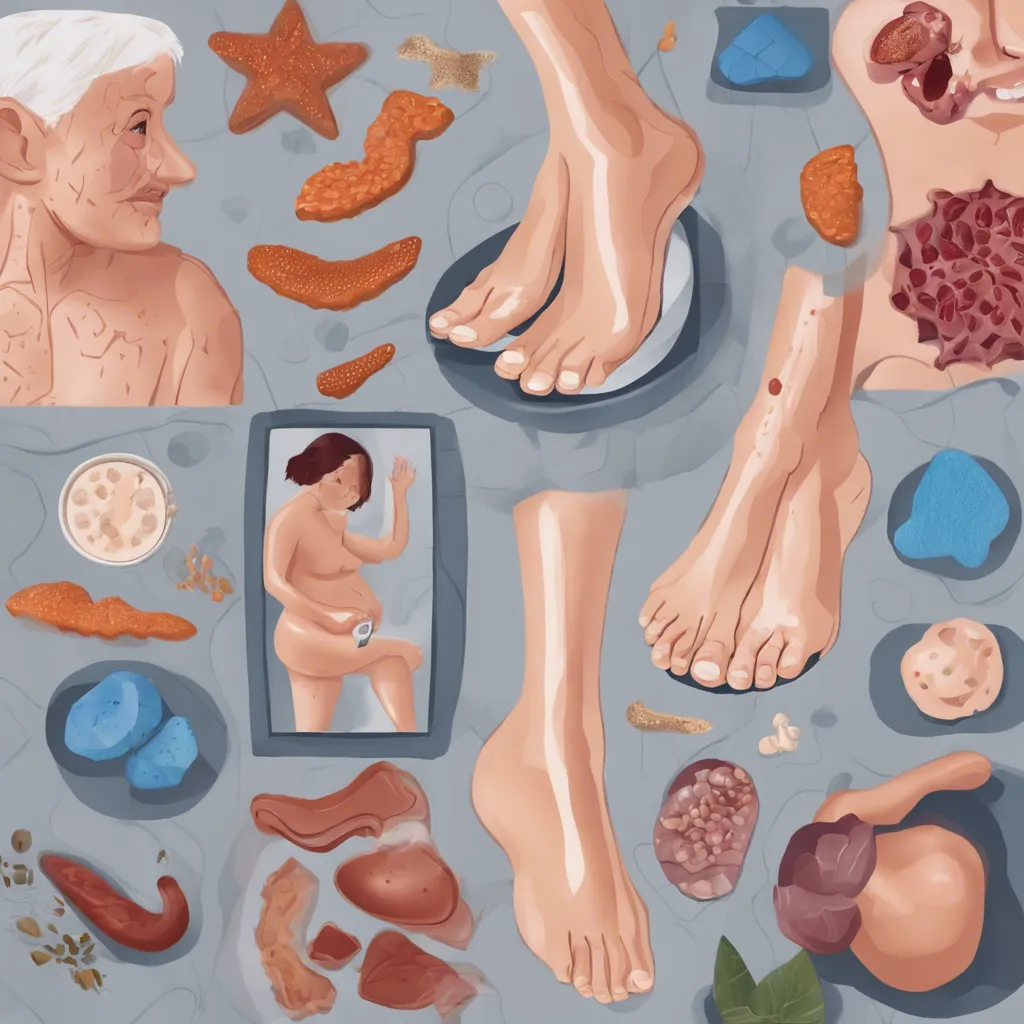The Connection Between Diabetes and Skin Conditions
Did you know that diabetes can affect more than just your blood sugar levels? Discover the surprising link between diabetes and skin conditions in this eye-opening blog post.
Did you know that diabetes can affect more than just your blood sugar levels? Discover the surprising link between diabetes and skin conditions in this eye-opening blog post.

Diabetes is a chronic health condition that affects millions of people worldwide. However, what many may not realize is the profound impact diabetes can have on the skin. In this article, we will explore the connection between diabetes and various skin conditions, shedding light on why these conditions occur and how they can be managed. Understanding this link is crucial for individuals with diabetes to effectively care for their skin and overall health.
Diabetic dermatitis, also known as eruptive xanthomatosis, is a skin condition commonly associated with diabetes. It is important to understand the prevalence of this dermatological issue as it can be a significant concern for individuals with diabetes. Here are some key points to consider:
High blood sugar can lead to dry skin through multiple mechanisms. Firstly, elevated sugar levels can impair the production of natural skin oils, leading to moisture loss. Secondly, high blood sugar can damage blood vessels and decrease blood flow to the skin, further contributing to dryness.
Maintaining good hygiene is crucial for people with diabetes, as it helps prevent infections and promotes overall skin health. Regularly washing hands, keeping skin clean and moisturized, and practicing proper foot care are essential for managing skin conditions associated with diabetes.
A balanced diet plays a crucial role in maintaining healthy skin in diabetic patients. It provides essential nutrients like vitamins, minerals, and antioxidants that promote skin health, reduce inflammation, and improve the overall appearance of the skin.
In conclusion, the connection between diabetes and skin conditions is significant and often overlooked. Diabetic individuals are more prone to various skin issues, such as infections, itching, dryness, and slow healing. Maintaining good blood sugar control and adopting a thorough skincare routine can greatly help in managing and preventing these complications. Regular monitoring of skin health and prompt treatment for any issues is crucial to ensure overall well-being and quality of life for people with diabetes. By raising awareness and promoting early intervention, we can improve the outcomes and comfort for those living with this chronic condition.
People with diabetes are at a higher risk of developing various skin conditions. This is because high blood sugar levels can lead to several skin problems, such as dry skin, bacterial infections, fungal infections, and slow wound healing.
People with diabetes may be more susceptible to bacterial infections like styes (infection of the eyelid glands), boils (skin abscesses filled with pus), and folliculitis (inflammation of hair follicles). These infections occur due to compromised immune function and poor blood circulation in individuals with diabetes.
Diabetes can affect the body's ability to heal wounds due to impaired blood circulation, reduced oxygen supply, and nerve damage. High blood sugar levels can also weaken the immune system, making it harder for the body to fight off infection, further delaying the healing process.
To prevent or manage skin conditions, individuals with diabetes should maintain good blood sugar control, practice proper skincare routines (such as moisturizing regularly and avoiding harsh soaps), keep the skin clean and dry, wear appropriate footwear, inspect the feet daily for any signs of infection or injury, and seek medical attention promptly for any concerning skin issues.
High blood sugar levels can cause excessive dehydration, leading to dry skin in individuals with diabetes. Additionally, diabetes can damage the nerves that control oil and moisture in the skin, resulting in dryness.
High blood sugar levels create an ideal environment for fungi to thrive, making individuals with diabetes more prone to fungal infections. Common fungal infections include yeast infections (such as thrush or vaginal yeast infections) and fungal infections in the nails and feet (like athlete's foot).